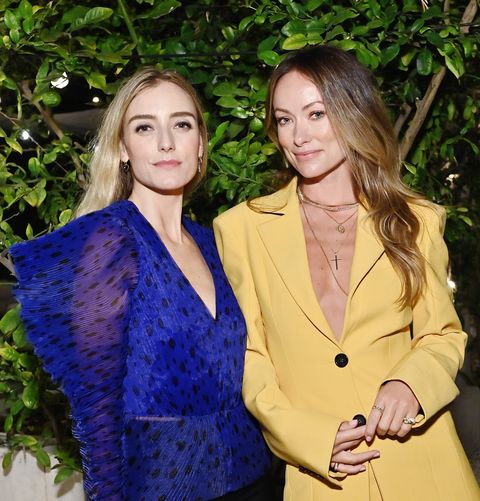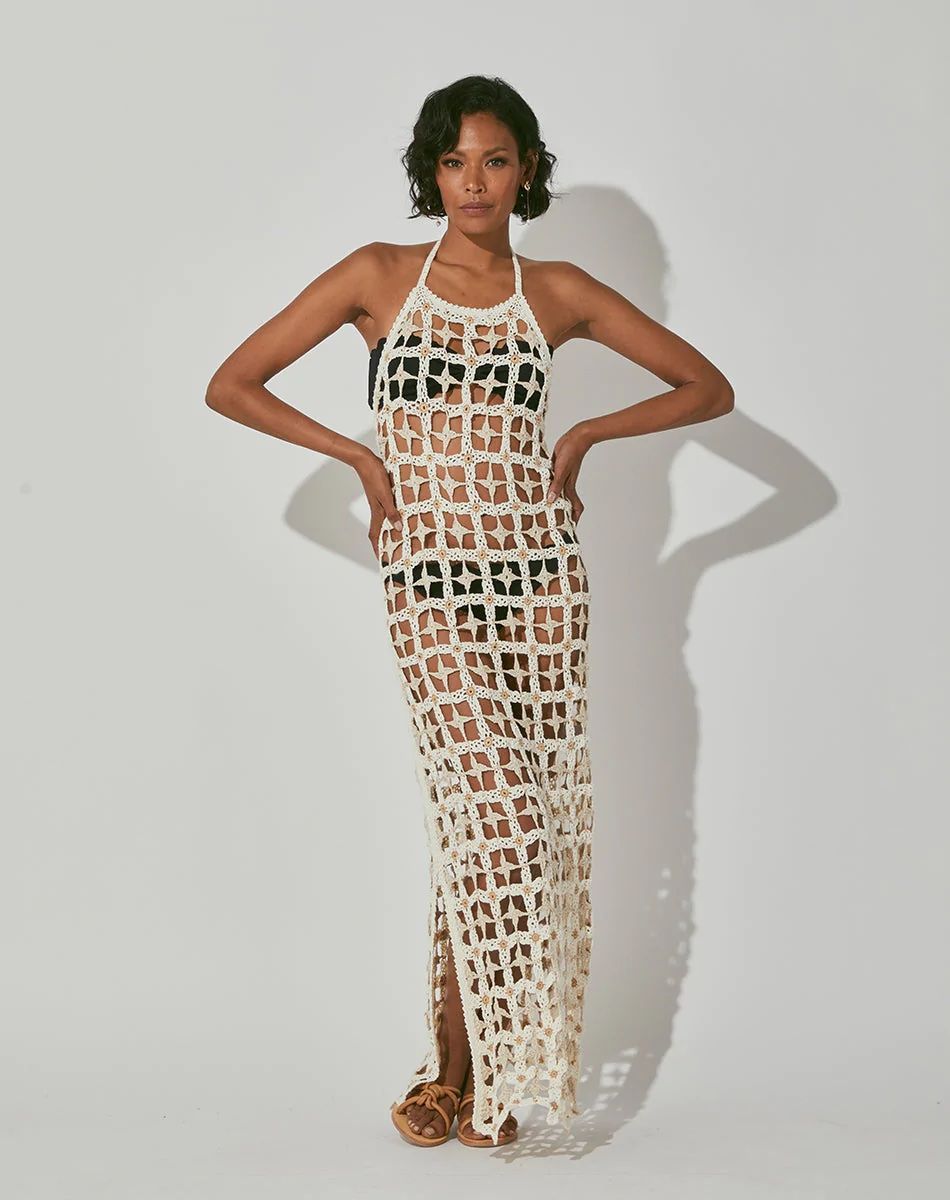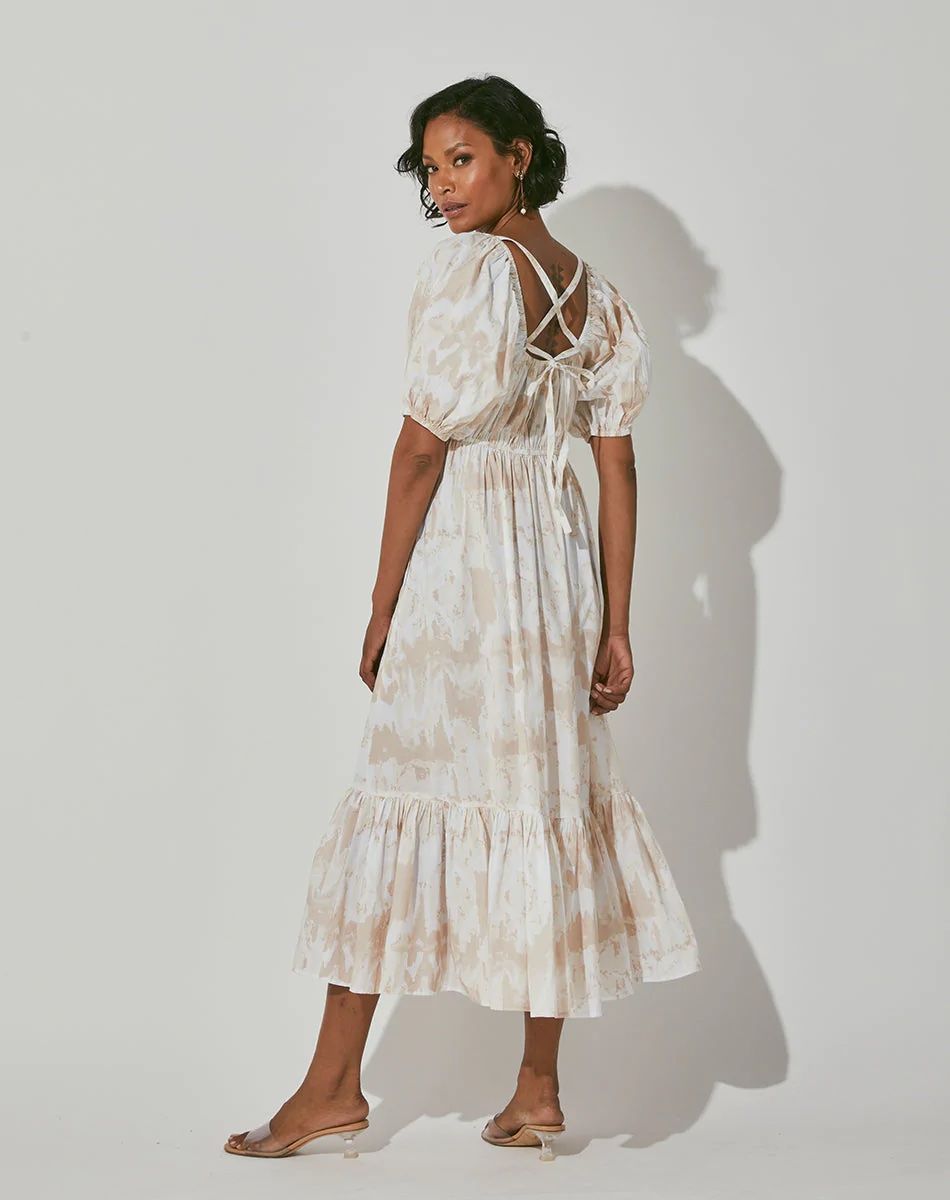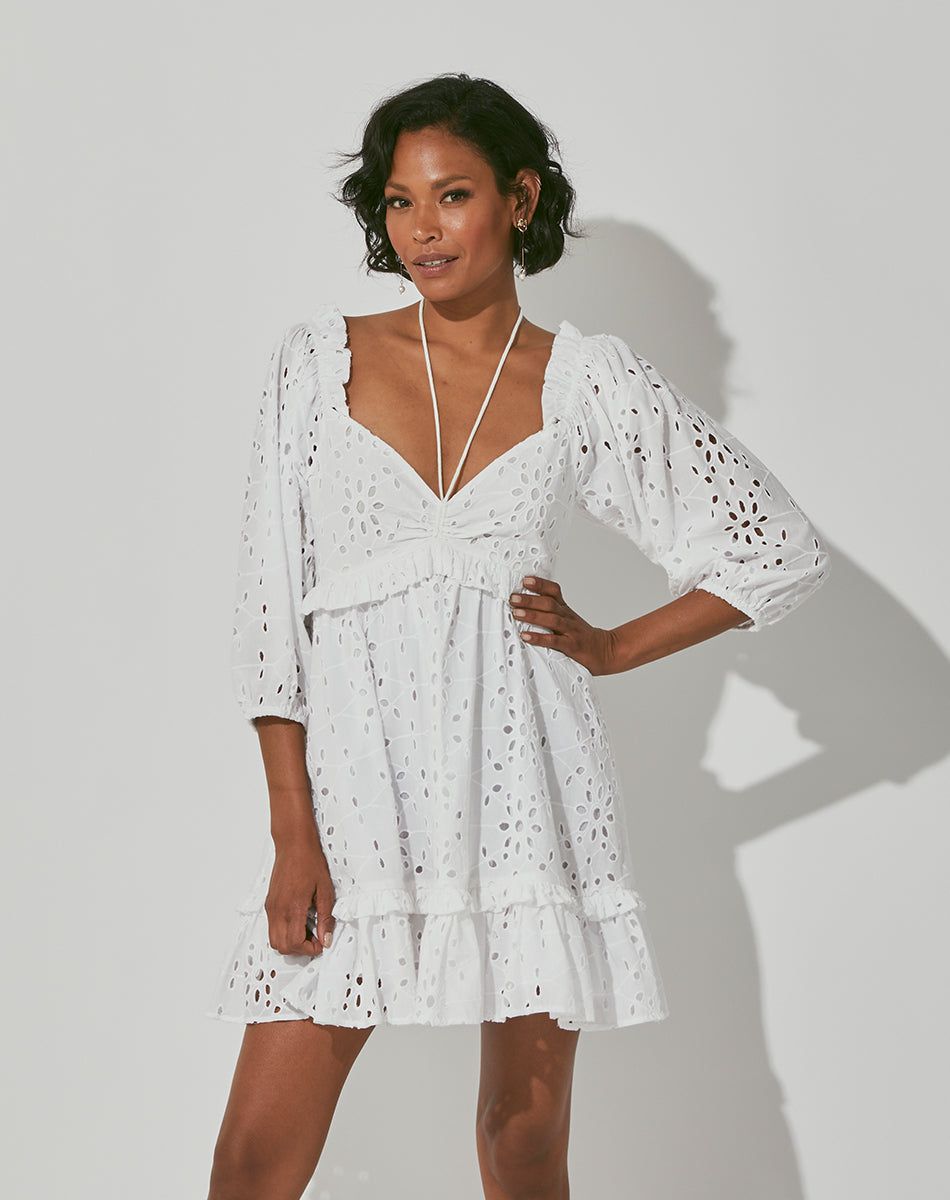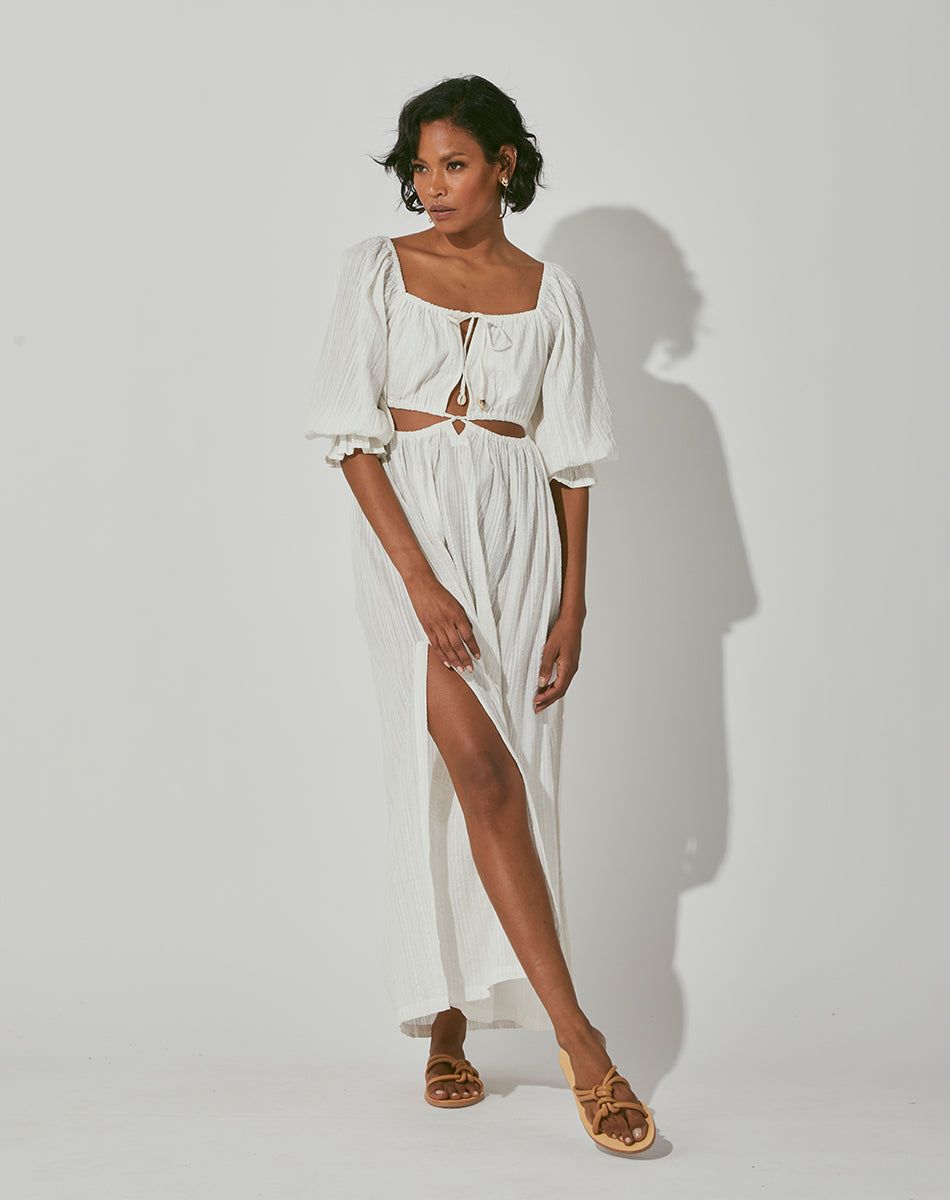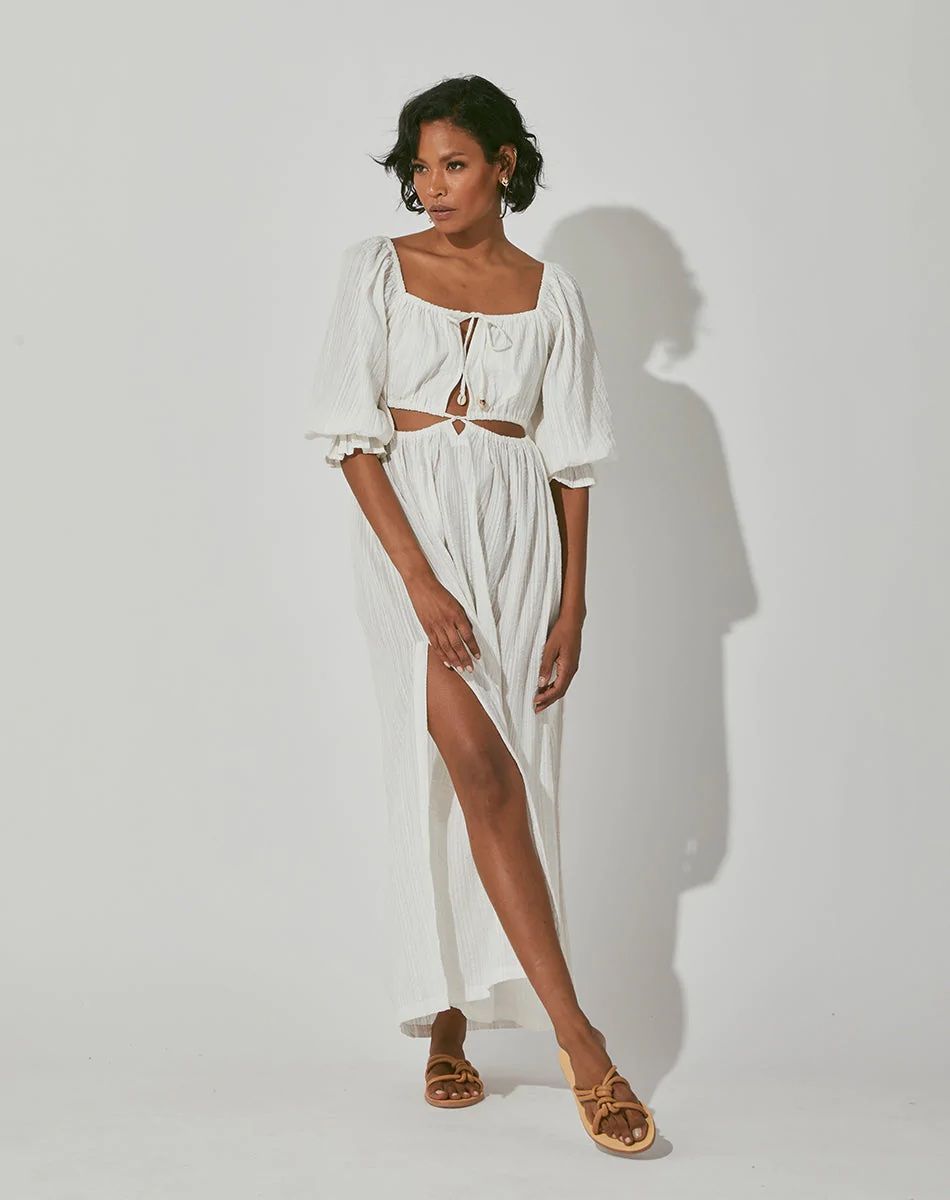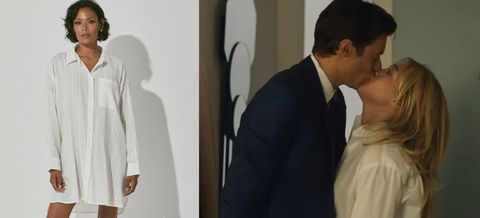Products You May Like
“I hope you get me when I say this,” says Olivia Wilde from somewhere in Italy. “In so many ways, this person is my person.”
Stans may wish differently, but Wilde is not talking about a certain pop god. Instead, the acclaimed director/actress/secret retail genius is referring to Babs Burchfield, the 40-year-old co-founder of the sustainable lifestyle company Conscious Commerce. The women met on a humanitarian mission to Haiti during the indie sleaze era, and quickly became partners in life, work, and hair. Both are the same shade of blonde (beach, not bleach) and both use their flaxen strands like swishy underscores when they talk. So far, they’ve helped big brands like Audi, H&M, and Anthropologie make better choices for the planet. “But our end goal is Bali,” says Burchfield. Adds Olivia with a laugh: “We’re gonna be the Golden Girls there, right?”
Turns out, Bali is also where the duo sought out their latest project, a collection with the sustainably certified label Cleobella. Created by another pair of star-crossed style gurus, Ange and Jim O’Brien, the line of dresses has the general vibes of “Laurel Canyon flower therapist, but make it fashion,” all made with organic cotton and fair-trade labor in Bali and India. Among the eight pieces are a breezy nap dress, a sexy crochet cover-up, and an oversized button-down that—spoiler alert—you may recognize in Don’t Worry Darling.
Here’s what Wilde and Burchfield had to say about sex appeal that lasts, clothes that are kind, and how to find friends who will never tell lies.
You’ve been best friends and business partners for 10 years. How did you know it’d be a match?
Olivia Wilde: We were on our way to Haiti together. Babs was running an organization called Artists for Peace and Justice… She was such a baller, in terms of running this organization, being an authentic human, having a full creative vision, and raising money and doing outreach without being smarmy at all. I was in awe.
Babs Burchfield: That’s such a good word, “smarmy!” Ugh, yeah. There’s a lot of that in philanthropy, and Hollywood in general. I hate it.
OW: At that time, people weren’t necessary thinking of me being business-minded, but I really am. And she really is, in exactly the same way… It shouldn’t be hard to know where your clothes come from.
BB: Now you can’t go for coffee without them telling you, “The beans are from here. They’re responsibly harvested. They benefit this community.” But when we started, it wasn’t that way! And we were like, “We’d be so much more inclined to invest in fashion if they showed us where our dollars were going.” I’ve been on factory tours [of some fast fashion facilities], and it’s horrific. The conditions, the wastewater; you can’t unsee it. Healthy people and a healthy earth need to go together. That’s not optional. Everyone says they’re “sustainable,” but no. The future is regenerative. It has to put resources back into the earth, and back into communities.
Has social media made your mission easier or harder?
OW: We’re trying to encourage people to be more thoughtful about what they wear and how they buy it. We love this Cleobella collection because it’s both timeless and it’s on trend. It’s meant to last you multiple seasons, multiple adventures… But now, on Instagram, there’s a culture of taking pictures of in a different outfit all the time, and trying to prove that you’re constantly a new version of yourself. But you can still do that with lighting, with camera angle, with styling.
BB: [Laughs] Listen to her; she’s a director!
OW: It’s so cool to stand for something. That person getting paid to tag Forever 21 because they have an endorsement deal, and they don’t really care? They’re not standing for something. That’s the conversation we’re fighting to have.
How does one embrace that vision of having new style, but not necessarily new clothes, all the time?
BB: I try to only buy something if I can see a full life for it. It isn’t like, “Oh, that’s a dress I want to buy to go to Italy,” full stop. It’s like, “Oh, pack that for Italy, then throw a sweater over it at a beach party, then do a major heel for cocktails,” right? That’s style. And there’s something very sexy about that versatility, and the intelligence you put behind it.
You started Conscious Commerce in your 20s, and you’re now in your 30s. How has your style changed in this decade?
BB: When you’re in your 30s, I think you also have a little bit more confidence. I hope, anyway! And it’s a very specific kind of confidence that lets you have fun because you’re finally embracing what you have… You’re the only person who knows how to be you. So you pick clothes you actually like.
OW: Oh my god, my 20s! Ha! It’s interesting because Babs and I just went on a little shopping spree in London. We only went to only vintage stores. And I noticed… in my late 30s, I now gravitate towards higher-end brands at vintage stores. I think this is spectacular—to be able to invest in a brand I believe in, whether it’s Alaïa or it’s Gucci, and to continue the lifecycle of a piece that has been worn, but is still incredibly intact. And even though I am not a brand whore—I don’t give a shit about what brand I’m wearing—I do admire the work of certain designers, so I invest in their stuff because I believe in them and I love being able to give them a second, or sometimes third, life. Second, third, fourth, who knows. But this is very different from my early 20s, when I was like, “I will work any ripped tee and any shitty band T-shirt because I like the feel of it.” Not anymore.
Does your friendship influence your sense of style at all?
BB: You buy things more thoughtfully when you’ve learned that you need to trust your friends to say, “Do not buy that ugly thing; you do not need it and it will not work.”
OW: I have noticed that shopping now is different! Because I have someone I implicitly trust telling me, “Olivia, do not get that. You do not need that; you do not want that.” The exact same trust that goes into running Conscious Commerce, it’s exactly that amount of trust that makes me feel really, really good in my clothes. That kind of trust is built over many years, and it only happens through compassion and honesty all around.
The trailer for Don’t Worry Darling is out in the world, and everyone is talking about it. Is there a link between the vintage vibes in the movie and this collection?
OW: The first thing you should know is that Arianne Phillips designed the costumes. She is someone who has a very deep and incredible knowledge of fashion and vintage. She got her start touring with Madonna. She’s designed Broadway shows and films. And when we began working together, she taught me so much about vintage fashion. We explored so many different decades of fashion when designing this film. And we always came back to the classic staple pieces, and what style has survived. I find myself attracted to the silhouettes that survive cultural upheaval or societal change, you know? That’s what a classic is—it’s what survives, and the idea of “what survives” is really interesting [in the film]. So our lead character, played by Florence Pugh, wears a white button-down men’s shirt.
OW: Very much! And I remember when Arianne and I were designing the film, we thought, We have to incorporate a white button-down into the film, because it is something so timeless that now, in 2022, we recognize it to be sexy and classic. And in 1958, when a woman putting on her husband’s shirt was equally gorgeous and flirtatious, and somehow masculine and playful. It’s a woman taking power from a man’s work clothes. That’s important! Then, when you look at the knit dress, it’s so sexy in a retro Palm Beach kind of way… Don’t Worry Darling exists in the world of Palm Springs in the ’50s, which is all about the pool and the desert. So, absolutely, there’s a connection between the film and this capsule, and how we’re using fashion to tell the story of these people.
Excuse us while we add this sartorial nugget to our Don’t Worry Darling coverage…
OW: [Laughs] WOW.
This interview has been edited and condensed for clarity.
“Her beauty and her brain go not together.” —William Shakespeare
